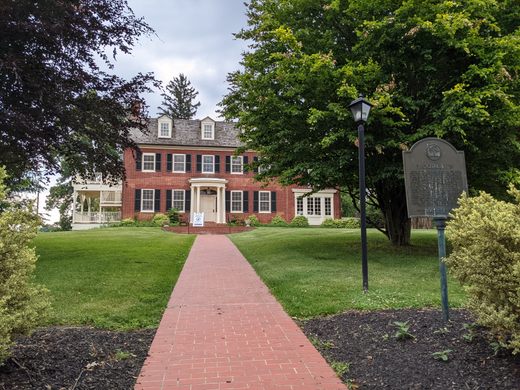Underground Railroad Experience Trail
Walk a trail through a historic Quaker town that outlawed slavery in 1777 and was a major waypoint on the Underground Railroad.
The town of Sandy Spring, Maryland was settled by religious Quakers in the 1720s. In 1777, the Quakers internally outlawed members of the church from enslaving people, and a community of formerly enslaved people settled alongside the Quakers in the area. These two groups would eventually work together to make the town a major waypoint on the Underground Railroad, helping enslaved people from the American South escape to the North.
Starting in the early-1800s and continuing through the Civil War until the eventual abolition of slavery, the Underground Railroad was a loosely structured network of routes and safehouses that people escaping slavery would use to travel north, sometimes as far as Canada.
The Underground Railroad Trail Experience was established by the Montgomery County Parks system to commemorate the county’s role in the historic operation, such as in 1857 when fugitive slave Dred Scott was given shelter at Sandy Spring and represented by the county attorney while the Supreme Court decided his fate.
The hike starts at the historic Woodlawn Manor, an old plantation whose owners were kicked out of the Quaker church for refusing to free their enslaved laborers. The trail traverses the dense woods and meanders across fields and streams, passing by hollowed out trees that may have been used as food caches, and boulders that marked property boundaries and may have been used as trail markers for escaping slaves.
Visitors will pass the small freshwater spring that gave Sandy Spring its name and finally end up at a large, 300-year-old white ash tree that stood in the center of the historic community and would have been a beacon, guiding those escaping slavery to a place where they could find some brief shelter and supplies before continuing their journey further north.
Know Before You Go
The park is open year-round but parking is limited, so if you visit on a weekend try to get there early. The trail itself is 2 miles one-way, 4 miles round trip. It crosses uneven terrain, creeks, and fields, so dress appropriately.Also in Sandy Spring are the historic Quaker Friends Meeting House and the Sandy Spring Slave Museum. The Meeting House can be seen with a short detour off of the trail and the Slave Museum is a short drive away.



























Follow us on Twitter to get the latest on the world's hidden wonders.
Like us on Facebook to get the latest on the world's hidden wonders.
Follow us on Twitter Like us on Facebook